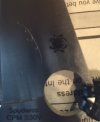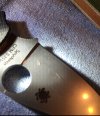- Joined
- Dec 28, 2017
- Messages
- 2
I recently received a Spyderco Para 2 S30V and a sharpmaker from my parents as a christmas present, ( i had been talking about it for a while lol) and ive been learning to sharpen accurately and i think im getting pretty good at it. I started out by sharpening some old $5 walmart pocket knives from around the house and whatever else i could find that was dull before i took my new Spyderco to the stones. After a little bit of research i felt confident enough to sharpen my para 2 and worked it up through all the grits successfully. The regular "Fine" stones that came with the sharpmaker easily got it shaving sharp and after I bought some "Ultra Fine" stones on amazon the edge is damn near mirror like and it slices phone books, notebook paper and whatever else really well. I see a lot of the knife dudes on youtube that use leather strops and get their knives sharp enough to whittle hair. How would i do that? I read that "Ultra Fine" spyderco stones are somewhere in the range of 2000 grit/3-4 micron or something. Should i buy higher grit stones before i get a strop or should i just go straight from ultra fine to a strop?




